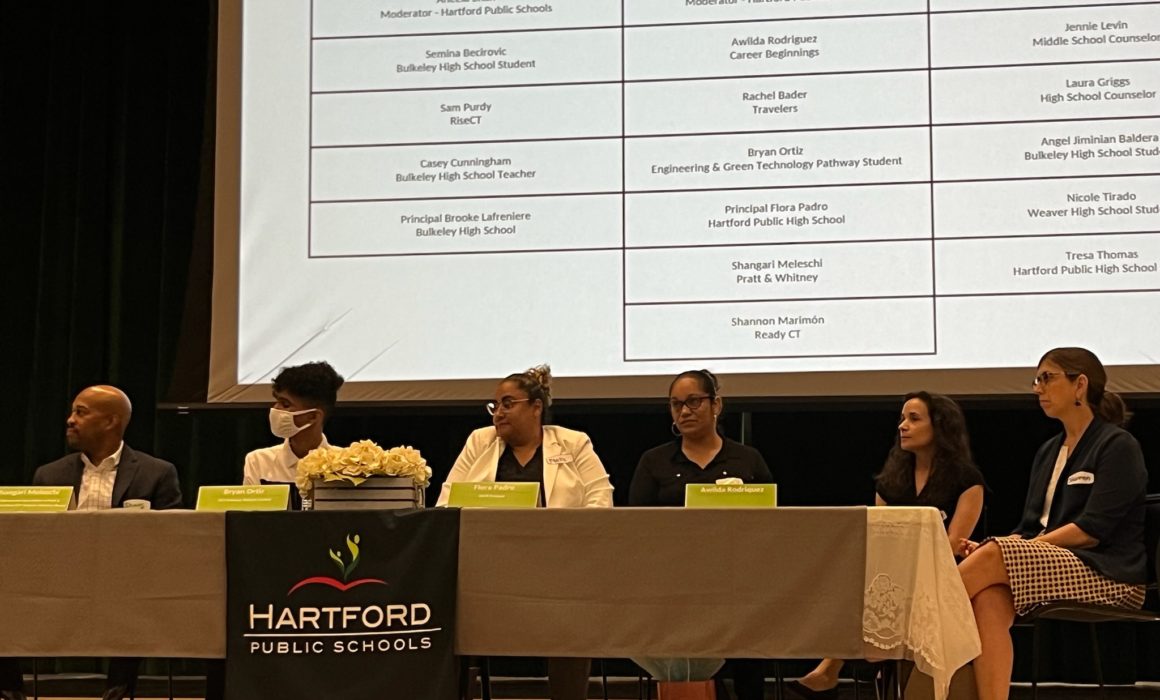ALL In! Partners Step Up to Help Seniors Plan Their Futures
The Class of 2022 program to connect graduating Hartford seniors to a post-secondary plan is in full swing with community-based organizations’ staff working with seniors on a solid plan for their futures after high school. While 88% of Hartford Public Schools’ graduating seniors have made some kind of plan for college, career or the military after graduation this month, Hartford Superintendent Leslie Torres-Rodriguez said at a recent event celebrating students, 12% have been referred to the Class of 2022 program.
Out of the 179 seniors from eight Hartford high schools whom staff referred to the program because they had no formal plan for their lives after graduation, 52 seniors, or 29%, have registered. Of those, 33 seniors, or nearly 64%, have already participated in some way to begin the process of preparing for their future and earn a cash incentive.
Staff from the Blue Hills Civic Association, Center for Latino Progress and Ready CT are meeting with students in their high schools and outside of school to help them plan for skills training, community college, the military or a job with advancement potential. Local foundations made this program possible, allowing the students to earn $50 stipends for attending a workshop, meeting with a staff member to learn about options or enrolling in one of several summer programs.
“Thanks to various funders, we have a chance to help these students who, due to constraints at the school district and their own challenges related to COVID, are not yet on a high-quality post-secondary pathway,” says Paul Diego Holzer, executive director of Achieve Hartford. “It’s an honor to try and help these students put themselves on a great trajectory, and it’s wonderful working so closely with HPS staff to learn from this work and find ways to make this type of work no longer needed in the future.”
To reach the majority of seniors who haven’t yet responded, community-based organizations’ staff members are resourceful, tenacious and persistent. They’re reaching out through texts, emails and phone calls and trying to meet with the students in person while they’re in school. Also, post cards will be attached to students’ diplomas and graduation packets for those without a post-secondary plan, to try to connect with those students who don’t worry about their futures until they’ve graduated. Once students enroll in the Class of 2022 program, they can count on a designated CBO staff member to guide them through the process, answer questions and help keep them on track.
The ALL IN! Coalition, local foundations, nonprofit organizations, the City of Hartford and HPS launched this temporary program last year in response to students learning remotely and not meeting with their guidance counselors to plan for their futures. Based on lesson’s learned from the pilot year, this year the focus has been CBO staff members forming relationships with students while they’re still in school and staying with them throughout the summer and through placement or Sept. 16, whichever comes first.
“Partners are collaborating deeply on outreach methods and designing workshop curriculum and career pathway information,” Holzer says. “They are working as a real team to help as many seniors as possible.”



